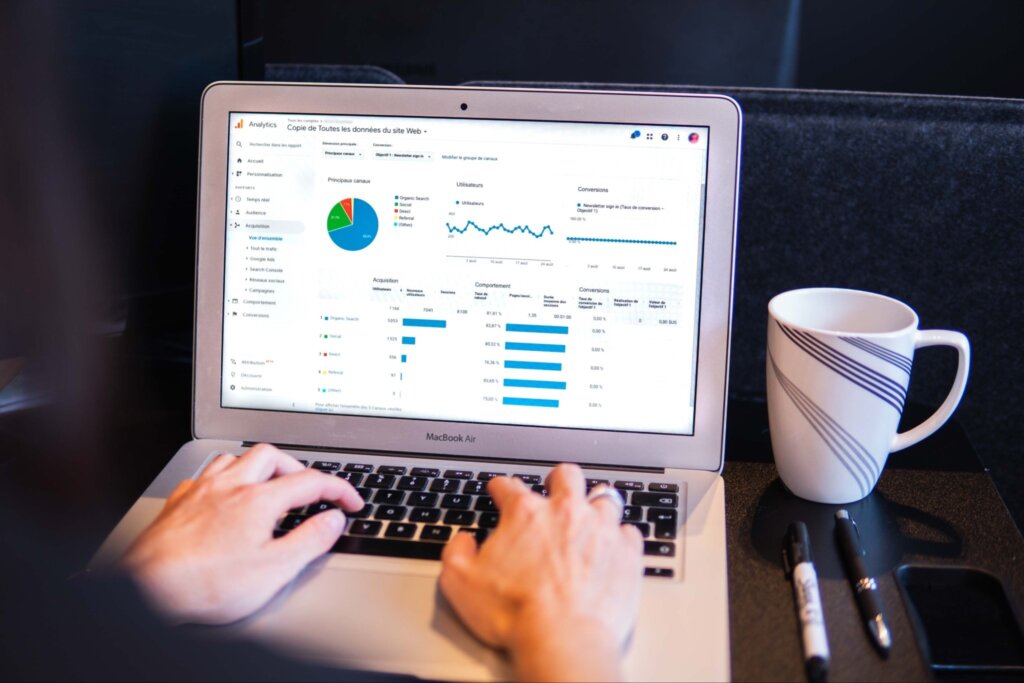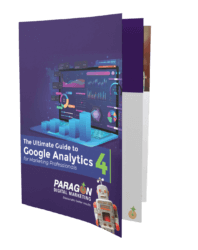How to Successfully Use Remarketing
Have you ever noticed that sometimes after you visit a website, it suddenly seems like the company is appearing everywhere you’re visiting online?
They probably are. In fact, they’re doing it specifically for you. That’s remarketing in action.
Remarketing can be an effective strategy for improving your conversions among customers that have viewed your website or interacted with your content, but have not taken the action you would like them to. It’s an incredibly useful tool to have up your sleeve, so let’s dive in to how it works:
What is remarketing?
Remarketing is a form of targeted advertising that allows you to show ads to people who have already interacted with you in some way. For example, they may have visited your website, signed up for your email list, or clicked on a social media ad. It works by using tracking cookies or device IDs to find those people again. They might be shown a new ad based on what they appeared to have interest in before, or they might see things like a “Forget something?” abandoned cart message.
There are different ad platforms you can use for remarketing, with the two most common being Google and Facebook. With Google remarketing, people will see your ads virtually anywhere online, since ads can be shown on Google partner websites as well. Facebook remarketing delivers on the Facebook platform so users are most likely to see your ad pop up in their newsfeed.
The purpose of remarketing is to give people a second chance to take action. It’s a way of cultivating familiarity – if they see your ads often, they’ll get to know your brand, and hopefully, you’ll be top of mind if they decide to make a purchase.

How has remarketing changed?
Remarketing technology has been around for many years but the environment has been changing. Recently, users have become more concerned with data privacy, so steps have been taken to tighten up the requirements around how businesses or organizations can collect or use data. An example of this includes Europe’s GDPR and other regulatory restrictions are evolving rapidly.
In line with this data privacy focus, Google announced the phasing out of third-party cookies. They have also confirmed that once the phase-out is complete, they won’t be offering any alternative tracking methods with user-level identifiers.
These changes are reflected in the new Google Analytics 4 (GA4), which has several differences compared to Universal Analytics. A new AI feature is in place to help fill in the gaps where customers don’t allow cookies, and in anticipation of the complete phase-out of cookies.
This doesn’t mean that other parties, such as Facebook, Adroll, or Criteo, won’t continue to offer ways you can remarket. They’ll just need to stay informed of new regulations as they occur and make changes accordingly. Google has clearly stated they anticipate that these rules will only become more strict.

How to use remarketing
Remarketing is still a great strategy, even if the methods are changing. It allows you to better capitalize on website traffic you have lost, target people who are more likely to come back and buy, and strategically keep your business top-of-mind with consumers.
We have yet to discover a business that remarketing doesn’t work for and it can be used easily by any type of business or organization with an online presence. We’ve listed a few tips for how to use remarketing and/or how to make the most of it below:
Remarketing is an underrated marketing tactic. It allows you to build a relationship and stay on the consumer’s radar. Share on XSupport your entire sales process
It’s important to know what your typical sales process looks like, including how long it usually takes, so you can make the best use of remarketing. For instance, you will want longer marketing windows in place to match up with longer decision-making processes, and shorter ones for inexpensive products with quick buying cycles.
If you sell products or services with a long buying cycle, remarketing can be one of your best strategies to remind visitors to come back to your website and continue to consider you as they research and move closer to a decision. More expensive products or services typically have a longer sales cycle as people decide if they want to make the investment and compare options more thoroughly. Remarketing is a great way to help ensure they don’t forget you.
Your remarketing campaigns may not always be about direct sales. Sometimes they may be about a different goal, such as generating leads. Maybe you’d like more people to sign up to your email list so you have a reliable way of reaching them without using cookies.
Finally, segmenting your audiences and only remarketing to those who are the most likely to return and buy, are additional ways to yield higher success with remarketing. We often talk about qualified leads in marketing, which refers to people who have completed an action which indicates they’re interested and are a good match for your products or services. How you qualify people is important to consider and may look different across different businesses. For example, a visitor who fills out a form or spends longer than a couple of minutes browsing your website may qualify as a lead, whereas other actions don’t.
Know the customer buying cycle
Consider your typical customer buying cycle. They usually move through different phases which can be depicted in a sales or marketing funnel diagram. Defining these stages and aligning remarketing appropriately will engage the customer at the right time and with the right messaging.
You’ll see different versions of the marketing funnel, but they typically all work under a similar principle. The funnel has a top, middle, and bottom. The top represents all of the people who become aware of your company – perhaps through clicking on an ad or visiting your site from a social channel or another site. The middle phase is when the visitor is typically looking at multiple options and considering which one is best for their needs. This phase will be comprised of fewer people as you filter out visitors who may not be the right fit for your product or service and capture visitors who are right for your product or service and move to the next stage. The bottom of the funnel has even fewer people and represents when the prospect makes a decision to buy or not.
Below is an example of a marketing funnel which demonstrates where the hand-off may occur from marketing to sales. This can also help inform your advertising approach, as remarketing campaigns shift from informational to more action-oriented ‘buy now’ types of messaging.
Non-traditional remarketing strategies
Remarketing can also be used beyond lead generation and purchasing. Here are a few ideas for non-traditional uses:
- During the post-purchase phase: For instance, you can encourage people to leave a review, join your referral program, or share their recommendation of their purchase with their friends.
- Additional post-purchase remarketing could include cross-selling, sales of related products, and upselling.
- Ask people to follow or engage with you on social media.
- Do you sell products that can be reordered, refilled, or replenished? Remarketing can help you reach customers who have already purchased and remind them to place a new order.

Non-traditional remarketing strategies
Remarketing can also be used beyond lead generation and purchasing. Here are a few ideas for non-traditional uses:
- During the post-purchase phase: For instance, you can encourage people to leave a review, join your referral program, or share their recommendation of their purchase with their friends.
- Additional post-purchase remarketing could include cross-selling, sales of related products, and upselling.
- Ask people to follow or engage with you on social media.
- Do you sell products that can be reordered, refilled, or replenished? Remarketing can help you reach customers who have already purchased and remind them to place a new order.
Final thoughts
While the world of remarketing is changing, it remains an effective way to reach people who have already had contact with your business or organization. As a digital marketing agency, we use remarketing frequently, both on behalf of our customers and as part of our own marketing strategy.
Remarketing can work for any business or organization in a variety of industries, as long as good strategies are in place. Be mindful of the sales process and buyer journey for your products and services and customize your remarketing to achieve results.
Looking for more information or help with implementing remarketing for your business? Contact us today to get started.












